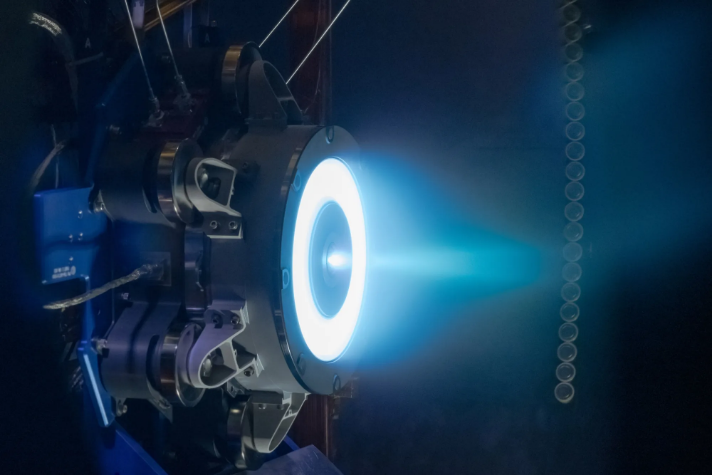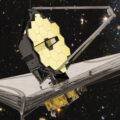NASA is revealing more details on its experimental new Advanced Electric Propulsion System (AEPS). Designed for the 2025 Gateway mission, the AEPS is a breakthrough the space agency is calling a “truly next-generation technology” that it says will “change the in-space propulsion game.”
NASA and its partners Aerojet-Rocketdyne caution that there is still more testing to be done on the cutting-edge propulsion system. However, they also say the Advanced Electric Propulsion system, which is reportedly nearly three times more powerful than the current state-of-the-art Hall thrusters, is expected to be ready for the 2025 launch.
Advanced Electric Propulsion System Boasts Significantly Higher Thrust
As of 2023, all satellites and other spacecraft are launched using chemical propellant. Once in orbit, virtually all use similar systems to maneuver in the vacuum of space.
More recently, breakthroughs in electric propulsion are allowing mission planners to look deeper into space and farther into the future than ever before. That’s mainly because electric propulsion systems like Hall thrusters use a combination of solar power and chemical propellants to dramatically reduce the fuel a satellite or other spacecraft needs to carry. The result is longer missions that can travel deeper and deeper into space.
Now, NASA says they are ready to dramatically alter the in-space propulsion game by introducing the most powerful solar electric propulsion system ever constructed: the AEPS.
“AEPS is truly a next-generation technology,” said Clayton Kachele, the AEPS project manager at NASA’s Glenn Research Center in Cleveland earlier this summer. “Current electric propulsion systems use around four and a half kilowatts of power, whereas here we’re significantly increasing power in a single thruster.”
In fact, according to the latest data on AEPS, the power output has nearly tripled to 12 kilowatts. “That capability opens a world of opportunity for future space exploration,” said Kachele, “and AEPS will get us there farther and faster.”
Rare Virtual Tour Includes Never Before Seen Images and Videos
In the latest update, NASA has included an interactive virtual tour of the Electric Propulsion and Power Laboratory (EPPL), where the Advanced Electric Propulsion System was created.
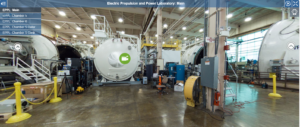

Composed of several high-definition images and embedded videos, the virtual tour allows viewers to rotate through a 360-degree view of the lab.
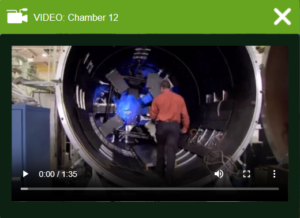

Other tour highlights include the ability to zoom in and take a closer look inside some of the test chambers where the AEPS is being put through its paces and the ability to hear from some of the scientists and engineers working on the Advanced Electric Propulsion System.
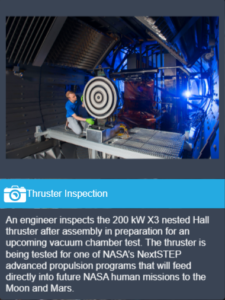

“These electric propulsion systems accelerate spacecraft to extremely high speeds over time using only a fraction of the fuel chemical propulsion systems require,” explains NASA’s latest announcement, “making electric propulsion an excellent choice for deep-space exploration and science missions.”
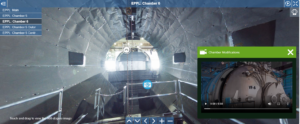

AEPS Readying for 2025 Launch
Finally, NASA announced that the AEPS has returned to the Glenn Research Facility “to continue qualification testing to certify the thrusters for flight.”
“This testing campaign is a big deal,” said Rohit Shastry, the lead AEPS engineer. “It’s kind of the final leg before we test the thrusters that will actually fly on Gateway.”
“I think it’ll be exciting to see what kind of missions this technology ends up enabling,” added Shastry. “We are pushing the boundaries of what’s been done and taking giant leaps forward with capability and opportunities.”
Christopher Plain is a Science Fiction and Fantasy novelist and Head Science Writer at The Debrief. Follow and connect with him on X, learn about his books at plainfiction.com, or email him directly at christopher@thedebrief.org.
